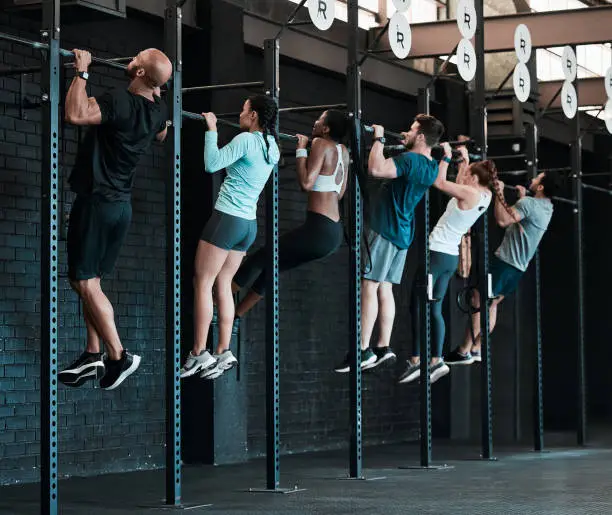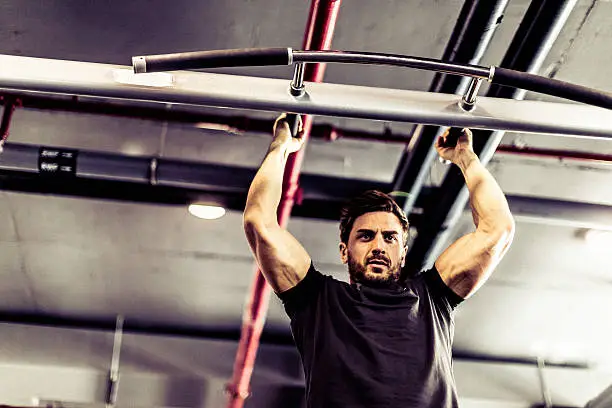A strong, wide back—such a blatant display of strength and dominance!
Equally worshipped in both ancient times and today, the V-shaped torso remains a permanent component of the ideal, powerful body. From classic Greek statues to your run-of-the-mill commercials, there is no escaping the sight, and the clear message it sends:
“You too, can have this. All it takes is work.”
As it happens, a good calisthenics back routine is right up there with weight training when it comes to shaping up your back. As tightly interconnected as they are, back muscles respond extremely well to compound workouts.
Here you will find everything you need to know about back calisthenics, as well as a way to apply and incorporate it into your daily workout schedule. So get ready that pull-up bar, grit those teeth, and let’s get working on that back!
The Value of Calisthenics Back Exercises

But before we begin, we will have to answer the big question: Why choose back calisthenics over weight training? As a matter of fact, the reasons are many:
- Back calisthenics are safe. The risk of injury is minimal to nonexistent. And as we all know, steady progress is always better than stagnation or decline
- The stress on your joints is much lower, saving you a lot of pain and discomfort in the long run
- As stated above, these movements are all compound exercises, hitting all the muscles you need in order to get that complete workout
- Aside from a pull-up bar, a bodyweight workout requires no equipment and is not anchored to a single location. You can do these exercises anywhere!
- Depending on whether or not you perform the movements slowly or swiftly, you can tilt your workout toward either favouring strength and mass (slow) or favouring cardiovascular health (fast)
Pull-ups—the Foundation of The Wide Back

While your whole musculature is what ultimately matters, the meat (pun intended) of what makes your back pop is your latisimus dorsi, more commonly known as the lats muscle. Your lats is what is ultimately responsible for the majority of what we perceive as the V-shape.
Thus, we will want to develop the lats, and the muscles surrounding it for proportion. The best way to do this is actually the pull-up (and pull-up like motions), but there is actually more to it than that.
First off, never slack on the lowermost part of the pull-up; the one where you raise yourself up from the dead hang. Whenever you do a pull-up, always let yourself hang all the way down, without relaxing your back, before bringing yourself up to complete the movement. This hits your lats like a truck, and will go a long way toward building that muscle.
Second, the way you place your hands on the bar is crucial when it comes to the muscle you are prioritising. For instance, chin-ups are a movement predominantly focused on your biceps. What we want to build is of course our lats, so we will be doing wide grip pull-ups; the ones that predominantly employ that muscle.
Finally, the firmness of your grip is not unimportant. The harder you squeeze on the bar, the more work ends up delegated to your arm muscles. We don’t want that, so the idea will be to use as light of a grip as possible, while remaining steady on that bar!
Other Exercises to Perfect That V Shape
Variety never a bad thing, and an always-guessing body is an always-developing body. Besides the aforementioned (and vital) pull-ups, there are plenty of other exercises to spice up your workout with:
- Reverse snow angels
- Superman
- Back extensions
- Scapula push-up
- Superman plank
- Plank with knee tuck
- Hip hinges
- Wall walk
- Dive bomber push-up
- Hindu push-up
- Pull-up hold
- Negative pull-ups
- Archer pull-ups
Combine these with your regular pull-ups, and you’ll be strong enough to hold up the heavens in no time!
Example Calisthenics Back Workout Routine

We will be going with two workout routines: a beginner one, and an intermediate to advanced one. Though we won’t be using all the above mentioned exercises, feel free to slip them into either of these routines for an additional challenge.
These should be done two to three times per week, and no more; space them out as it suits you. As always, never forget to warm up, and always allow at least a day to pass between individual workout sessions!
The Beginner Routine
Pull-ups/assisted pull-ups: 2 sets of 8 repetitions Back extensions: 2 sets of 10 reps
Reverse snow angels: 2 sets of 10 reps Plank: 2 instances of 30 seconds each Push-ups: 2 sets of 10 reps
Hip hinges: 2 sets of 10 reps Scapula push-ups: 2 sets of 10 reps
Aside from adding other exercises, feel free to increase the number of sets before transitioning to the next phase.
The Intermediate-Advanced Routine Back extensions: 3 sets of 10 reps Superman: 3 sets of 10 reps
Pull-ups: 3 sets of 10 reps
Wall walks: 3 sets of 6
Scapula push-ups: 3 sets of 10
Negative pull-ups: 2 sets of 10 Rest
Negative pull-ups: 2 sets of 10
Pull-up hold: 1 or 2 instances in upper position until failure Pull-up hold: 1 or 2 instances in lower position until failure
The intermediate-Advanced routine is no joke, and is to replace the beginner routine once the latter starts being too easy. Combine it with the more challenging exercises like the archer pull-ups for an absolute killer of a workout!
Final Thoughts
Working on your back is important for both injury prevention and progression in calisthenics. With this article, we hope that you’ve gained a solid base to build a strong back.
If you have any questions, please leave them in the comment box below!

Chris is an experienced Calisthenics practitioner focused on isometric exercises and street workout. He founded thehybridathlete.com in 2017, which was subsequently acquired by theyhybridathlete.com
He is based in Portland and has been working out using solely his own body weight and bars for the past 6 years.

